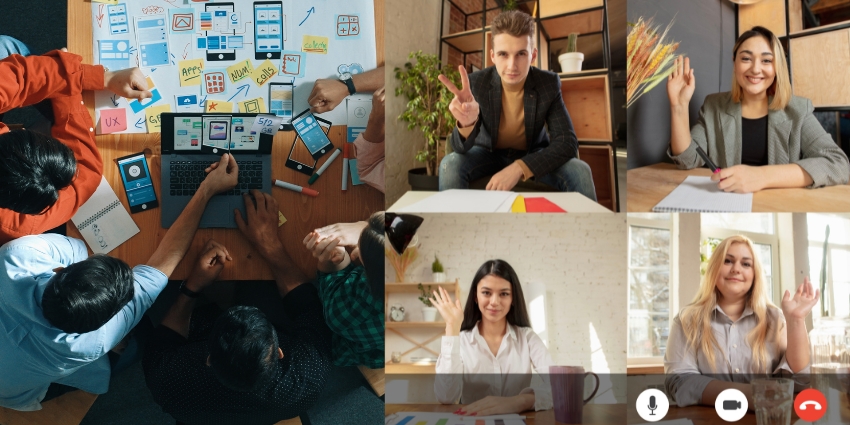As someone who has witnessed the dramatic transformation of workplace collaboration over the past decade, I can’t help but feel a mixture of awe and nostalgia when reflecting on how far we’ve come. The journey from conference rooms to virtual spaces has brought incredible efficiency, but also created a void where genuine human connection once flourished.
When Meetings Were More Than Calendar Invites
Remember when meetings meant gathering around an actual table? When you could read the subtle body language of your colleagues, sense their enthusiasm or hesitation in real-time, and share that collective energy that sparked spontaneous creativity?
I still recall my early career days when collaboration meant rolling up our sleeves in war rooms plastered with sticky notes and whiteboards filled with half-formed ideas. We’d stay late, order pizza, and experience those magical moments when someone would suddenly stand up and say, “What if we tried this instead?” – leading to breakthroughs that changed the course of entire projects.
The Digital Transformation: Efficiency at What Cost?
The shift was gradual but relentless. First came conference calls, then video meetings, followed by collaboration platforms that promised to make distance irrelevant. The pandemic only accelerated what was already in motion, pushing us into fully digital workspaces almost overnight.
Tools like Microsoft Teams, Zoom, and Slack have transformed how we connect, making global collaboration possible in ways we could barely imagine before. We’ve gained tremendous flexibility, eliminated commutes, and opened opportunities for talent regardless of geography.
But something profound has been lost in this transition.
The Human Element Diluted
“I feel like I’m just talking to boxes on a screen,” a colleague confessed recently. This sentiment echoes across industries as we grapple with digital fatigue and the strange paradox of being more connected yet feeling more isolated than ever.
The spontaneous hallway conversations, the impromptu lunch discussions where great ideas were born, the ability to sense when a teammate is having a rough day without them saying a word – these human elements have become casualties of our digital efficiency.
Research from Stanford and other institutions confirms what many of us feel intuitively: virtual collaboration often lacks the emotional resonance and creative spark that comes from sharing physical space. The brain processes digital interaction differently, making it harder to build trust and genuine rapport.
Bridging Worlds: Finding Humanity in Digital Collaboration
Despite these challenges, I remain cautiously optimistic. As we recognize what’s been lost, innovative companies are finding ways to preserve human connection within digital frameworks:
- Some organizations are redesigning offices not as daily workspaces but as collaboration hubs where teams gather periodically for high-value, connection-focused meetings
- New technologies are emerging that aim to recreate spatial dynamics in virtual environments, using advanced audio processing to make conversations feel more natural
- Teams are establishing “digital meeting etiquette” that prioritizes camera-on policies, dedicated focus time, and informal virtual gatherings
The most successful companies are those that acknowledge both the benefits and limitations of digital collaboration, crafting hybrid approaches that leverage technology while preserving human connection.
Looking Forward: The Next Evolution
As we move forward, the next evolution in meetings and collaboration won’t be defined by technology alone, but by how well we integrate technology with human needs. Perhaps the pendulum will swing back toward more in-person connection, or maybe we’ll develop entirely new paradigms that bridge digital efficiency with emotional resonance.
What’s certain is that we’re still in the middle of this transformation. The organizations that thrive will be those that recognize collaboration isn’t just about sharing information or completing tasks – it’s about creating environments where people feel truly seen, heard, and connected, regardless of whether they’re sitting across a table or across the world.
The story of meetings and collaboration isn’t just about tools and platforms – it’s about our fundamental human need to create together, to share ideas, and to feel that spark of connection that transforms good work into great work. As we navigate this evolving landscape, I hope we can reclaim some of what we’ve lost while embracing the best of what technology offers.
What’s your experience with this evolution? Have you found ways to maintain human connection in digital collaboration? I’d love to hear your thoughts and strategies for bridging these worlds.







